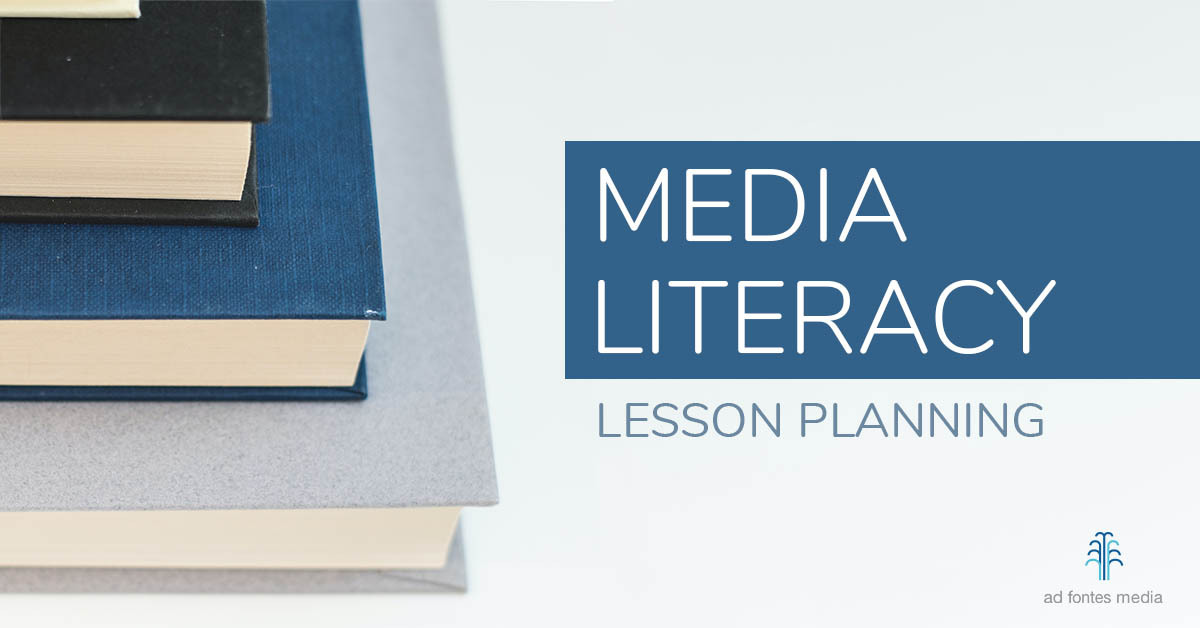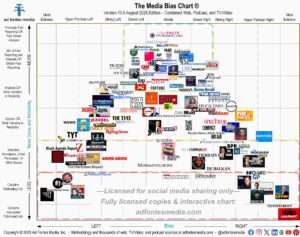
Where Can I Find Resources for Media Literacy Lesson Planning?
Author:
Sara Webb
Date:
05/21/2021
Media Literacy
Picture this: you see a potato chip company’s commercial for their product, but no one is eating it. In fact, the commercial consists of fit, young, fashionably dressed people energetically dancing while holding the bag of chips. Okay, maybe at the end, one of them eats a chip. What are they selling? Chips? Or the idea that people who buy their chips are hip, popular, and probably good dancers?
Being able to figure that out is essentially the skill we call “media literacy.” Since I was first getting started with media literacy lesson planning [mumble mumble] years ago, I’ve collected many definitions of media literacy. Despite the many definitions, I believed then – and I still believe – that it mostly comes down to three steps. First, build the understanding that there are layers of meaning underneath the media that you see. Next, scaffold the process of interpreting the meaning and purpose of those messages. Finally, get better and better by doing this through practice, revisiting steps one and two as you do.
I already possessed this understanding as I was starting out. Yet, there I was, fresh from library school, in need of a curriculum for my ninth grade media literacy course. I knew that the curriculum would need to do three basic things:
- Provide a basic framework for interpreting content.
- Give me the freedom to explore topics of interest to the students.
- Make it possible to pivot to emerging news stories in the media.
Did I need a prepackaged curriculum or individual lessons? How could I figure that out?
I Looked to the Best in the World – Canada!
As it turns out, I figured it out through a lot of research, with some trial and error for flavor. Beginning with a definition, I worked toward developing competencies. What did I want the students to know, and what skills should they be able to demonstrate at the end of the year?
Canada is our closest neighbor who has started the work of developing a comprehensive media literacy curriculum for grades 1-12. Elementary students are taught to analyze texts from fairy tales to t-shirt slogans. Secondary students explore YouTube, news reporting, and marketing. By the time they graduate, Canadian students have been taught to think critically about advertising and public relations, representations of gender, violence, and race in the media, the role of the media in global citizenship, and about new technologies.
So, Canada is a world leader for media literacy, but what about the U.S.?
Media literacy education in the U.S. has been described as having “diverse approaches.” So far, only fourteen states have legislation with media literacy-related language in them. Since there is no national mandate when it comes to teaching media literacy, there is no structured series of lessons, either. Common Core standards, which were released in 2010, encourage media analysis and critical thinking, and media literacy lessons can build on those foundational skills. However, you need something to bridge that gap between standards and methods.
Some of my Favorite Resources
- Center for Media Literacy was founded in 1989. CML is a nonpartisan educational organization that provides leadership, public education, professional development and evidence-based educational resources, nationally and internationally.
- Known for: MediaLitKit
- Catch phrase: “Make wise choices.”
- Checkology is an initiative of the News Literacy Project. Its goal is in teaching how to identify credible information, seek out reliable sources, and apply critical thinking skills to separate fact-based content from falsehoods.
- Go here for: Determining the credibility of news content.
- Civic Online Reasoning grew from the Stanford History Education Group’s study about using lateral reading to determine the trustworthiness of sources and stories.
- Hot tip: I recommend the videos that author John Green hosts to prepare students for the deeper work of content analysis.
- Common Sense Education recognizes news literacy as a subset of media literacy that recognizes that quality, credible, independent news and journalism are critical components of a free and democratic society.
- Visit for: Free lessons for News and Media Literacy (K-12).
- Critical Media Project provides resources that look at media literacy through the lens of race and identity. They build on students’ critical thinking and empathy to understand questions of identity and representation in the news and media.
- Extracurricular: This came out of the USC Annenberg School of Journalism and Communication.
- MediaSmarts launched in 1996, this is Canada’s central hub for all things media literacy. Their mission is to impart critical thinking skills that help children of all ages to engage with media as active and informed digital citizens.
- Enjoy for: Its freely available repository of lessons and resources.
- MediaWise from the well-known Poynter Institute offers lessons that focus on combating fake news.
- Motto: They want you to be a critical consumer of online content.
- If those are not enough, our friends at Media Literacy Now have compiled a more comprehensive list, which you can view here.
You can continue your own journey by examining the sources above, by scrolling through some of the fabulous media literacy themed TED Talks, or by checking out books in your local library on media literacy topics.
One of my favorite takeaways from the excellent information available from the National Association for Media Literacy Education (NAMLE) is that media literacy education affirms that people use their individual skills, beliefs, and experiences to construct their own meanings from media messages. Something that seems like an obvious connection to one person (potato chips = young and hip) may not be as evident to another (potato chips = great party snacks). In other words, until we have a tangible, centralized plan that guides our nation (or more likely, each individual state) toward media literacy competencies, educators have the ability to pick and choose which media literacy topics makes the most sense to teach in their school and community.
Media Literacy as Foundation for News Literacy
It also helps to look at the broader picture. What are some of the skills that students will need in order to be successful later in life?
News literacy is definitely one of them, and with increasing urgency. To begin teaching news literacy, start with some of the general resources above, and once your students have an idea of how the news landscape is painted, then you are ready to engage them with Ad Fontes Media’s SUMMA News Literacy Curriculum.
Say Hello to Content Analysis
SUMMA works by teaching students the skill of news content analysis, which guides them to evaluate news stories for eight different factors for political bias and reliability. Students score them, and they can even plot them on a chart individually or as a class.
As the instructor, you can select the content to be rated, or you can assign weekly news content Ad Fontes curates with the goal of recognizing reliability and bias in the news. As you rate content, you’ll find that the methodology and scoring system give you and your students a platform and common language to talk about sensitive and politically charged topics in an analytical way. This was my favorite piece of using SUMMA in my high school classes throughout the contentious election, and then the political machinations of dealing with COVID-19.
So, here’s my advice: start with a broad overview of media literacy using the curricula named above, and when you’re ready to narrow it down to news literacy, let us know, and we’ll help you navigate the exciting world of content analysis. You won’t regret it.
(And a final side note: if anyone is in possession of a potato chip that can actually deliver on those promises of making folks hip, popular, and good dancers, drop me a line.)
Sara Webb
Sara Webb is a cybersecurity consultant and former high school librarian from Philadelphia, PA. She holds an M.S. in Informatics and an M. Ed in School Library and Information Technology, and has been a media literacy educator for over a decade. Sara started with Ad Fontes Media in July 2020 as a Media Analyst, and she currently continues in that role and as in-house Media Literacy Specialist. When not engrossed in media literacy projects, Sara can be found at the barn with her ex-racehorse Homer, or training her corgis for dog agility competitions.


